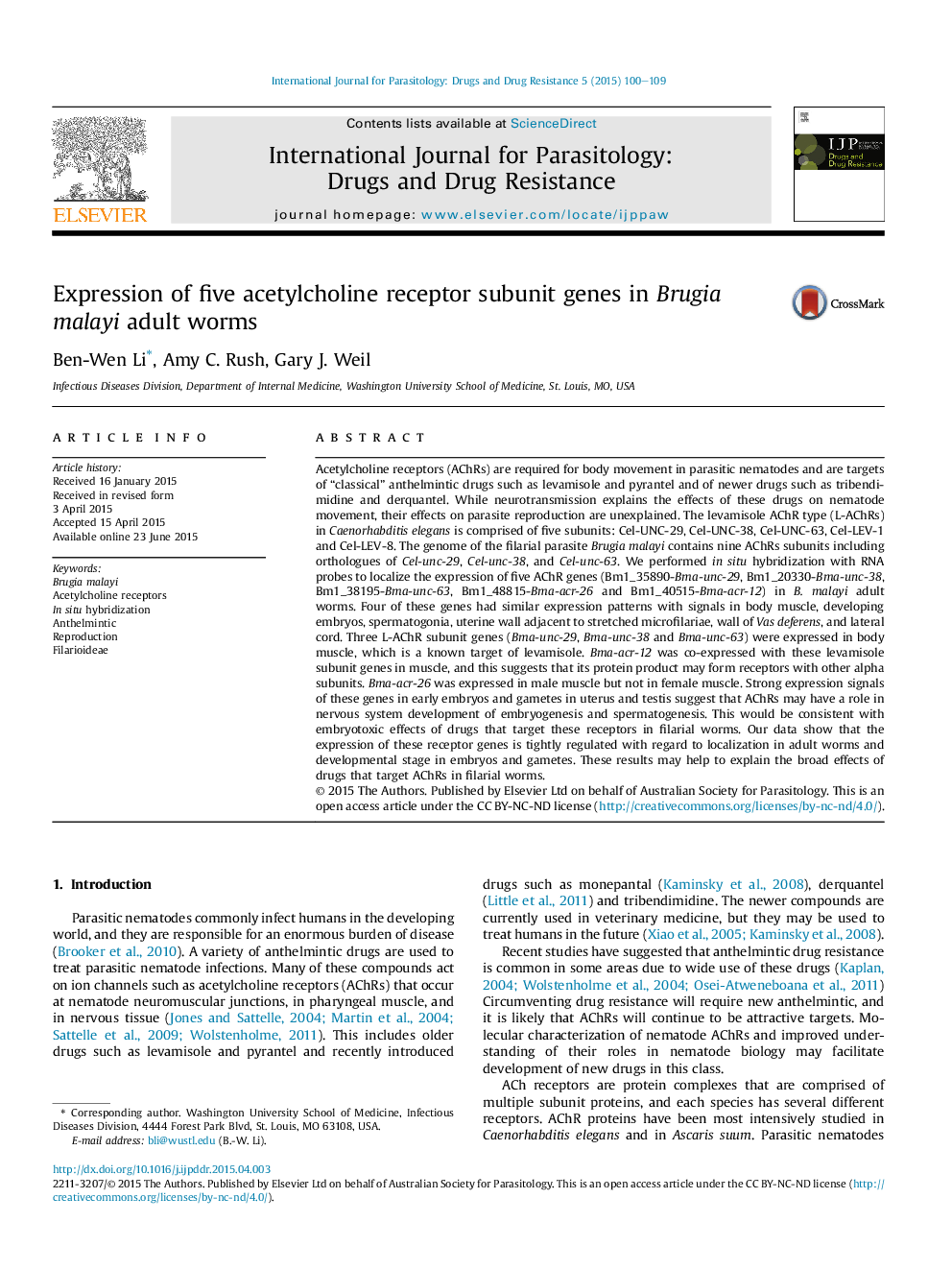| Article ID | Journal | Published Year | Pages | File Type |
|---|---|---|---|---|
| 2054748 | International Journal for Parasitology: Drugs and Drug Resistance | 2015 | 10 Pages |
•Expression patterns of Brugia malayi AChR subunit genes studied by in situ hybridization.•All genes highly expressed in developing embryos and sperm precursors.•Highly expressed in the walls of uterus and Vas deferens with mature offspring.•Four of five genes expressed in body muscle of adult worms.•Expression patterns shed new light on the action of anthelmintics in filarial parasites.
Acetylcholine receptors (AChRs) are required for body movement in parasitic nematodes and are targets of “classical” anthelmintic drugs such as levamisole and pyrantel and of newer drugs such as tribendimidine and derquantel. While neurotransmission explains the effects of these drugs on nematode movement, their effects on parasite reproduction are unexplained. The levamisole AChR type (L-AChRs) in Caenorhabditis elegans is comprised of five subunits: Cel-UNC-29, Cel-UNC-38, Cel-UNC-63, Cel-LEV-1 and Cel-LEV-8. The genome of the filarial parasite Brugia malayi contains nine AChRs subunits including orthologues of Cel-unc-29, Cel-unc-38, and Cel-unc-63. We performed in situ hybridization with RNA probes to localize the expression of five AChR genes (Bm1_35890-Bma-unc-29, Bm1_20330-Bma-unc-38, Bm1_38195-Bma-unc-63, Bm1_48815-Bma-acr-26 and Bm1_40515-Bma-acr-12) in B. malayi adult worms. Four of these genes had similar expression patterns with signals in body muscle, developing embryos, spermatogonia, uterine wall adjacent to stretched microfilariae, wall of Vas deferens, and lateral cord. Three L-AChR subunit genes (Bma-unc-29, Bma-unc-38 and Bma-unc-63) were expressed in body muscle, which is a known target of levamisole. Bma-acr-12 was co-expressed with these levamisole subunit genes in muscle, and this suggests that its protein product may form receptors with other alpha subunits. Bma-acr-26 was expressed in male muscle but not in female muscle. Strong expression signals of these genes in early embryos and gametes in uterus and testis suggest that AChRs may have a role in nervous system development of embryogenesis and spermatogenesis. This would be consistent with embryotoxic effects of drugs that target these receptors in filarial worms. Our data show that the expression of these receptor genes is tightly regulated with regard to localization in adult worms and developmental stage in embryos and gametes. These results may help to explain the broad effects of drugs that target AChRs in filarial worms.
Graphical abstractFigure optionsDownload full-size imageDownload as PowerPoint slide
